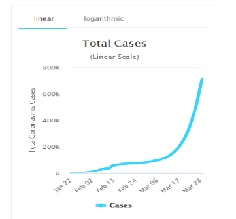Practical guidance for healthcare professionals during the COVID-19 pandemic; with special emphasis on the care of cardiovascular patients and personal protection
Abstract
A novel, severe acute respiratory syndrome coronavirus 2 (SARS-CoV-2) is causing the COVID-19 pandemic. There are concerns regarding the spread of disease by asymptomatic carriers to healthcare workers who continue to see patients and to perform procedures on them. The infection then could be transmitted through them to other patients who eventually, could infect persons in the community. Further, limitations of existing tests to detect new cases that are negative early in the disease; and the inability to use appropriate personal protection equipment (PPE)also contribute to the spread of infection. This document, from the COVID-19 Working Group of Wellness and Radial Intervention Society, describes considerations for management and care of cardiovascular disease (CVD) patients with the concept of COVID 19 `designated` Vs. enabled` centers for those with symptoms of and/ or confirmed COVID-19 disease Vs. asymptomatic suspects. It also provides guidance to healthcare professionals, hospital administrators, and policymakers in general and to those managing patients with CV and other diseases, regarding the concept of `levels of personal protection` for staff; with suggestions for `equivalent innovative alternatives`, and a` protection plan` for patients to prevent the spread of disease. The guidance can also be broadly applied to surgical branches in general and to other specialties involved with invasive, semi-invasive, and non-invasive procedures such as gastroenterology, urology, anesthesiology, otolaryngology, and ophthalmology which carry a higher risk of exposure for healthcare professionals.
Downloads
References
Coronavirus disease (COVID-2019) situation reports. Geneva: World Health Organization,2020. Available at https://www.who.int/emergencies/diseases/novel-coronavirus-2019/situation-reports/.
Huang C, Wang Y, Li X, Ren L, Zhao J, Hu Y, et al. Clinical features of patients infected with 2019 novel coronavirus in Wuhan, China. Lancet. 2020;395(10223):497-506. doi: https://doi.org/10.1016/S0140-6736(20)30183-5.
Center for Disease Control and Prevention. Coronavirus (COVID-19) 2020. Available from: https://www.cdc.gov/coronavirus/2019-ncov/.
LM Kucirka, SA Lauer, O Laeyendecker, Boon D, Lessler J. Variation in false negative rate of reverse transcriptase polymerase chain reaction-based SARS-COV-2 tests by time since . Ann Intern Med. 2020;M20-1495. doi: https://dx.doi.org/10.7326%2FM20-1495.
Mizumoto K, Kagaya K, Zarebski A, Chowell G. Estimating the asymptomatic proportion of coronavirus disease 2019 (COVID-19) cases on board the Diamond Princess cruise ship, Yokohama, Japan, 2020. Euro Surveill. 25(10): 2000180. doi: https://dx.doi.org/10.2807%2F1560-7917.ES.2020.25.10.2000180.
Ganyani T, Kremer C, Chen D, Torneri A, Faes C, Wallinga J, Hens N. Estimating the generation interval for COVID-19 based on symptom onset data. doi: https://doi.org/10.1101/2020.03.05.20031815.
Van Doremalen N, Bushmaker T, Morris DH, Holbrook MG, Gamble A, Williamson BN, et al. Aerosol and surface stability of SARS-CoV-2 as compared with SARS-CoV-1. New Engl J Med. 382(16):1564-1567. doi: https://doi.org/10.1056/nejmc2004973.
Guo YR, Cao QD, Hong ZS, Tan YY, Chen SD, Jin HJ, et al. The origin, transmission and clinical therapies on coronavirus disease 2019 (COVID-19) outbreak–an update on the status. Mil Med Res. 2020;7(1):1-10. doi: https://doi.org/10.1186/s40779-020-00240-0.
COVID 19 for India updates, March 24,2020, center for disease dynamics economics and policy. Available at https://cddep.org/wp-content/uploads/2020/03/COVID-19.indiasim.March23-2-eK.pdf.
Cheng X. Protecting cardiologists during the COVID-19 epidemic–lessons from Wuhan. China [Internet]. Escardio. org. European Society of Cardiology. 2020. Available at https://www.escardio.org/Education/COVID-19-and-Cardiology/protecting-cardiologists-during-the-covid-19-epidemic-lessons-from-wuhan.
Hamon M, Pristipino C, Di Mario C, Nolan J, Ludwig J, Tubaro M, et al. Consensus document on the radial approach in percutaneous cardiovascular interventions: position paper by the European Association of Percutaneous Cardiovascular Interventions and Working Groups on Acute Cardiac Care** and Thrombosis of the European Society of Cardiology. EuroIntervention. 2013;8(11):1242-1251. doi: https://doi.org/10.4244/eijv8i11a192.
Seto WH, Tsang D, Yung RW, Ching TY, Ng TK, Ho M, et al. Effectiveness of precautions against droplets and contact in prevention of nosocomial transmission of severe acute respiratory syndrome (SARS). Lancet. 2003;361(9368):1519-1520. doi: https://doi.org/10.1016/s0140-6736(03)13168-6.
Szerlip M, Anwaruddin S, Aronow HD, Cohen MG, Daniels MJ, Dehghani P, et al. Considerations for Cardiac Catheterization Laboratory Procedures. During the COVID-19 Pandemic. Perspectives from the Society for Cardiovascular Angiography and Interventions Emerging. Leader Mentorship (SCAI ELM) Members and Graduates. Cath Cardiovasc Interven 2020. doi: https://doi.org/10.1002/ccd.28887.
Chow TT, Kwan A, Lin Z, Bai W. Conversion of operating theatre from positive to negative pressure environment. J Hosp Infect. 2006;64(4):371-388. doi: https://dx.doi.org/10.1016%2Fj.jhin.2006.07.020.

Copyright (c) 2020 Author (s). Published by Siddharth Health Research and Social Welfare Society

This work is licensed under a Creative Commons Attribution 4.0 International License.


 OAI - Open Archives Initiative
OAI - Open Archives Initiative


